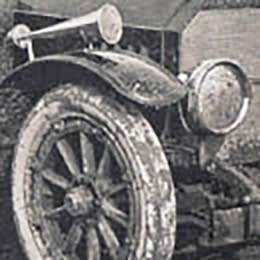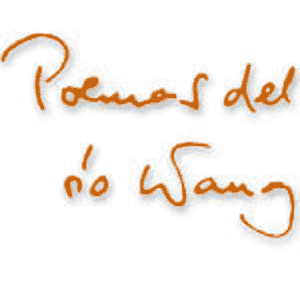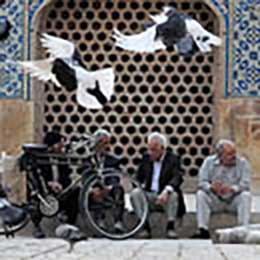The photos were made by Jules Gervais-Courtellemont (1863-1931) in the 1920s. Their themes follow the standard models of the Egyptian Grand Tour of the period: scenes in the bazaar and on the streets of Cairo, the pyramids and the Egyptian monuments along the Nile up to the first cataract in Aswan, dancers and bejeweled women.
These images, however, are more than the usual schematic and often preset orientalizing scenes of the period. Courtellemont, who grew up in Algeria, regarded the Arab people for more than an exotic photo subject, and he even converted to Islam in 1894.
 Two students of Mecca stand at the Mosque of el-Azhar (The number above the door is not 76, but just 6 written twice, both in Eastern and European Arabic numbers)
Two students of Mecca stand at the Mosque of el-Azhar (The number above the door is not 76, but just 6 written twice, both in Eastern and European Arabic numbers)It is true that at the same time the compositions try to convey the “magic Orient” that the European audience was accustomed to and demanded. No wonder. The images of Courtellemont were intended primarily for public presentations. In 1911 he opened in Paris the “Palais de l’autochromie”, which was an exhibition room, a studio, a laboratory, and an auditorium for 250 persons in one. Here Courtellemont delivered his extremely popular presentations accompanied with his color glass slides made during his long journeys from Spain through the whole Islamic world to India and China.
The technique of the color glass slide or autochrome was patented by the Lumière brothers in 1904, and in 1907 they started to produce and market their own autochrome glass plates. The technique consists in covering one side of the glass with an even mixture of potato starch grains previously dyed red-orange, green and blue-violet. This layer was fixed with varnish, and further covered by a light-sensitive emulsion. The plate was put into the camera with the bare side facing the light, so the rays of various colors could penetrate to the emulsion only through the starch grains of the same color.
Since the reproduction of autochrome glass slides on paper remained very incomplete over a long period, the technique was primarily used for the purpose of slide show presentations, which at that time – as we have seen earlier – were very popular until the spreading of the movies. In America they were extensively used by the National Geographic Society, and after the end of the war Courtellemont worked regularly for them as well. This Egyptian series, which he also made on the commission of the National Geographic and which was preserved in their collection, was published on the Retroscope blog some weeks ago.


































































































Add comment